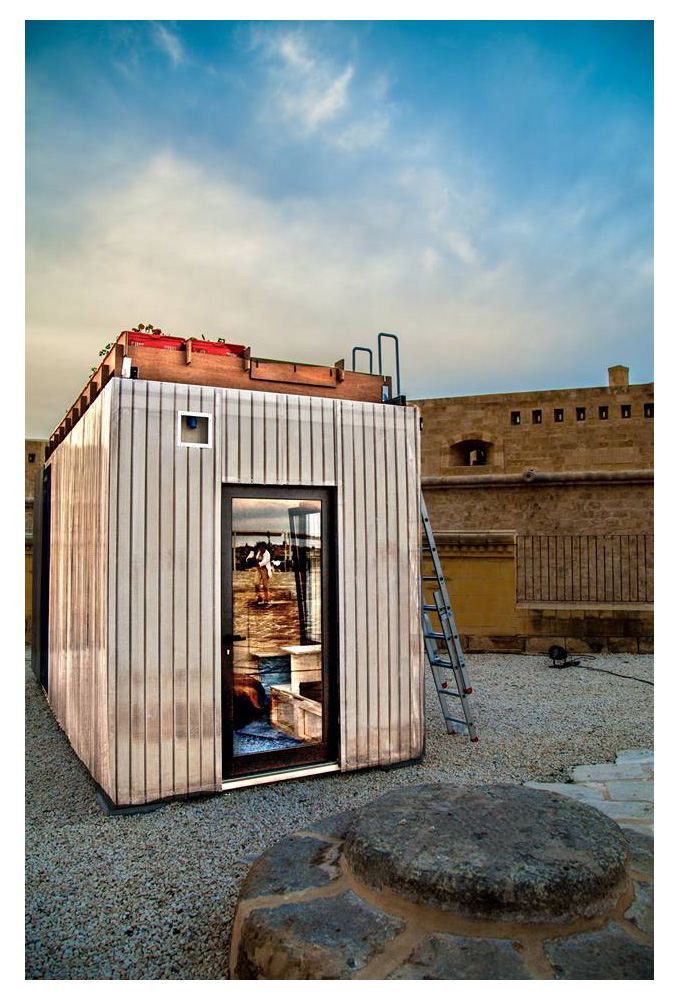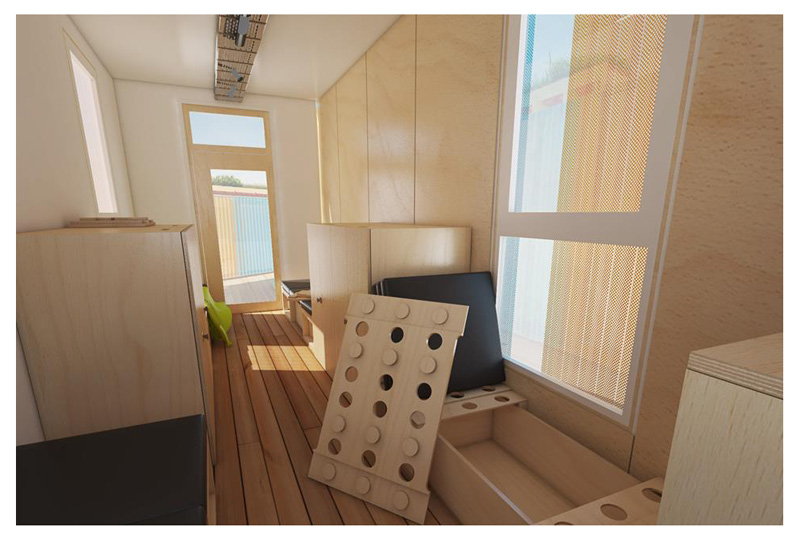- Home
- About the Group
- Corporate Social Responsibility
- University of Malta Students build Speranza a Humanitarian Shelter

FIMBank unveiled the prototype of a humanitarian shelter designed and developed by a group of University of Malta third year students from the Faculty for the Built Environment reading for the degree of BSc (Built Environment Studies), as part of their studies to become professional architects. The shelter, nicknamed “Speranza”, is currently on display outside the Fort as one of the satellite exhibits at the Malta Design Week.
“The number of displaced people worldwide continues to grow at an alarming rate, primarily due to wars, natural disasters or deteriorating economic conditions. FIMBank President Margrith Lüstchg-Emmenegger stated that: “Millions of people are affected by natural or man-made disasters every year and according to international relief organisations the displacement of people will continue to increase at a faster rate. I believe this will lead to an unprecedented need for assistance that could overwhelm the world’s current humanitarian capacity. This is without a doubt a great challenge and this is why the Bank decided to support this initiative and provide the financial support to build Speranza.”
Commenting on the project’s development, Prof. Alex Torpiano, Dean of the Faculty for the Built Environment at the University of Malta explained that: “A healthy human being can survive for weeks without food, and days without water, but in many cases only hours without proper shelter from the elements. Coming up with tangible and valuable improvements to existing shelter solutions was the key objective. This was an opportunity to show that architects can come up with solutions to global humanitarian challenges.” Lutschg-Emmenegger stressed the fact that “every human has the right to survival and protection. The chosen nickname for the prototype, ‘Speranza’, emphasises the desire for a positive outcome for displaced people everywhere.”
FIMBank partnered with the University of Malta and the NGO 808 Foundation where architects Chris Briffa and Sandro Valentino took on the role of lead project managers and design tutors to the group of students. Mr Briffa is a design tutor at the University of Malta, and renowned locally for promoting the awareness of architectural design. The brief for this project was to design a simple, sustainable and well-insulated unit by introducing low-cost improvements to existing technology effectively creating an enhanced shelter-solution. Periti Briffa and Valentino led a team of fifteen university students to work on this project with the aim of combining the elements of research and design with this core humanitarian objective.

During the course of their research the team discovered the existence of pre-fabricated units that are built-for-purpose and are easy to transport and assemble. Fortunately, a local company, HMK International, is involved in the production of similar units. Its Director, Karl Mifsud Cremona, was instrumental in providing the technical know-how and human resources necessary to perform the modifications and enhancements to the Pagin s.p.a. M1 model structure.
Prof. Torpiano stated that “Working within such a confined space was a daunting task for our students, and they faced the reality that their design decisions would have direct consequences on these vulnerable people’s day-to-day life when occupying such accommodation.” On his part Chris Briffa stated that “I am extremely satisfied with the students’ hard work and the prototype created. It is satisfying to see that design expertise, innovation and collaboration can really make a difference.”
Margrith Lutschg-Emmenegger said that the next stage of this project would be to make all the research, designs, plans and videos available online and free to everyone over the internet, through a website that will be developed for this purpose. “We believe that the knowledge acquired from this project should be made available to international organisations, suppliers, manufacturers and government entities. We are confident that some of the innovative ideas incorporated in this project will be adopted internationally. We will also be providing the UNHCR and Red Cross with copies of all designs, plans and supporting documentation.” Thanking all those involved in the project, Lutschg-Emmenegger added that: “We are delighted that this FIMBank idea has become a reality. It was very encouraging to witness university students taking this project from concept to final design stage, and it must be satisfying for them to have been part of this humanitarian initiative.”
The student team consisted of Justin Mizzi, Julian Vassallo, Katrina Gauci, Samuel Bonello, Andrea Zerafa, Jonathan Avellino, Ryan Saliba, Bobby Pace, Paula Grech, Sacha Cutajar, Rene Fava, Martha Borg, Neal Vella, Stacy Rapa, and Matthew Muscat.